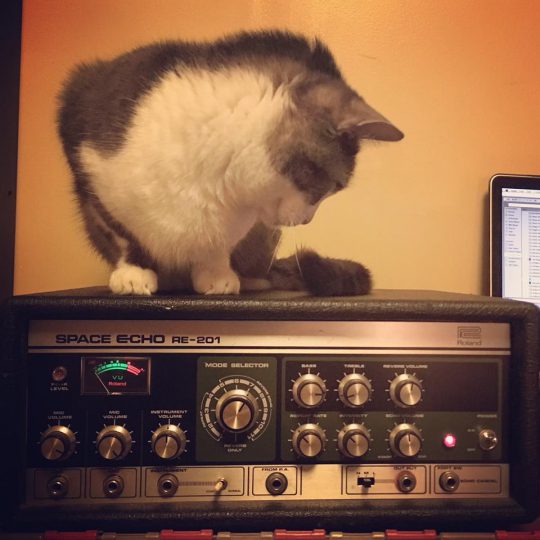
Biggie Smalls contemplates a vintage Roland Space Echo RE-201. From Brandon Fitzsimons via our Facebook page.
“What’s making that noise in there??”
The RE-201 continues to be prized by musicians for its sound. It is actually a true tape-echo machine (plus a spring reverb).
[Ikutaro] Kakehashi’s breakthrough development came in 1974 with the RE-101 and RE-201 Space Echo units, which used the standard 1/4″ tape of the open-reel variety, but made as one, continuous loop. It uses no reels of any kind; the tape is transported via a capstan drive. The tape loop is contained in a loose, constantly moving jumble in the tape chamber (also known as the tape tank) under a plastic panel which protects the tape and keeps it from getting tangled. The design resulted in lower levels of noise, wow, and flutter, and cut down on tape wear.[1] Replacement tapes were sold as well, named RT-1L.[2]
https://en.wikipedia.org/wiki/Roland_RE-201
There are several control dials on the device that alter such aspects as tape speed, repeat pattern (an 11-position rotary switch), one instrument and two microphone inputs, a single analog backlit VU meter for all three inputs, wet/dry mix for both echo and reverb, and intensity (number of repeats), that can be adjusted to a user’s liking; and bass/treble controls to EQ the sound of the repeats (not the dry signal), as well as dry and effected “Echo” output jacks with a switch for output setting (-10, -20, -35db levels.)
It is interesting to read this as I have been working extensively of late with the Magneto tape-echo simulator module from Strymon. You can see our review of the echo mode in this recent video.

